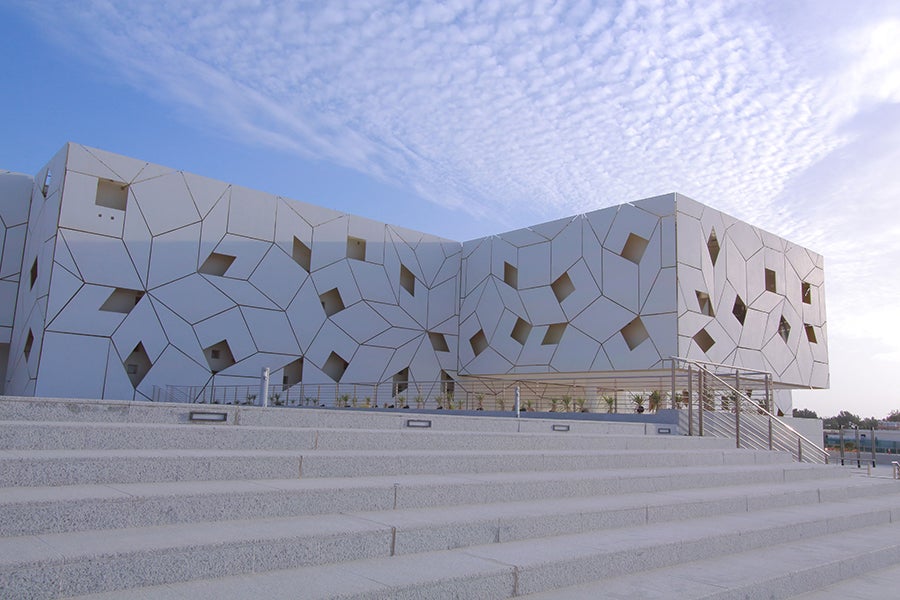By Dr. Roberto Di Pietro

With tens of thousands of satellites to be put into orbit in the next few years, a playfield that has seen just a handful of actors and a few hundred assets since the 1950s is dramatically changing. The new actors are expected to open their satellites to third-party applications. On the one hand, this would unleash new business opportunities, enabling the provision of brand-new services, as well as the optimization of existing ones. On the other hand, these very same applications, as well as state actors that undoubtedly will have an upper hand, could present a novel threat to the privacy and security of individuals, companies, and states.
By modern standards, satellite technology is not new. The first satellite was put into orbit in 1957 without the possibility of it being controlled from Earth, and it was nothing more than a simple radio transmitting from space. Foreseeable applications were limited: simply speeding up telecommunications - underwater cables were already providing trans-continental communications - and maybe TV broadcasting. While it was indeed a sci-fi achievement; humans had never reached orbit before, it came with (supposedly) limited, insubstantial applications for the general public, though its military applications (such as advanced surveillance and missiles launch detection) were already quite clear.
Fast forward less than 65 years, and satellites are a cornerstone of our way of life. Whenever you use assisted navigation technology, you are using a service provided by satellites. When you decide to go to the beach, it is because satellites have provided you assurance about the quality of the weather for the next 48-72 hours. Airplanes and ships rely on satellites for their communications, and the same is true when you are in a desert hundreds of kilometers away from any civilization. In the military, satellites are the cornerstone of modern warfare, providing sensing and communication capabilities in every possible scenario and geography. Though the best is yet to come.
Advancements in technology, in particular computing and miniaturization, but in high tech generally (including radio capabilities, the mathematics behind data transmission, and in materials science) have paved the way for never-before-seen types of satellites, such as CubeSat, a square-shaped satellite with a side of just 10 cm. Moreover, the relatively low cost, ease of management, and increased availability of vectors to place satellites in orbit (especially low earth orbit satellites, orbiting between 160 and 1,000 km from Earth) have opened the gates for a novel space race, motivated by the innumerable possible applications. Striking evidence of this race is SpaceX, an Elon Musk company that is deploying Starlink, a network of thousands of satellites (42,000 satellites are approved by the Federal Aviation Administration, the FAA). Or, similarly, think of Kuiper Systems LLC, a subsidiary of Amazon, that is planning to deploy over 3,200 satellites. To these two behemoths, one has to add the hundreds of startups that are planning to deploy their satellites or that already have them in orbit to experiment.
The interest in the field is evident in the Gulf region: The United Arab Emirates (UAE) recently launched the KhalifaSat Earth Observation imaging satellite and it also has a Space Center, established by the Dubai government to advance space science and advanced technology. The Kingdom of Saudi Arabia (KSA) is launching its 16th satellite into space (the SGS-1), with the specific mission to “provide secure satellite communication on the Ka-band for the government of Saudi Arabia.”). Qatar relies on Es’hailSat - the Qatar Satellite Company, a communications satellite operator headquartered in Doha. Es’hailSat was established in 2010 with the goal of managing and developing Qatar’s presence in space.
But what is the rationale behind this new space race? It is by and large the business and operating opportunities offered by satellites, and we can highlight a few.
Satellites for the Internet of Things (IoT): The diffusion of the IoT paradigm envisages 50+ billion newly installed devices, each requiring internet connectivity to generate their full expected value. In many settings (think of offshore platforms, harsh environments, and rural locations), the internet infrastructure is out of reach. That is where satellites come into play: they can act as the gateway to the internet for these low-end devices.
Precision agriculture: It is already possible to check for the healthiness of crops, harvest time, spot the very first cluster of illness, and optimize irrigation, via satellite. That translates into potential cost savings and increased revenue generation while helping to achieve sustainability and other development goals.
Security of the state: Satellites have a long history of successfully supporting intelligence, such as imagery recognition at borders, or providing a means for secure communications independent from ground infrastructure. The new application of satellites would be to support states’ economics, for instance checking for illegal fishing, illegal mining, or to control access to maritime exclusive economic interest zones, the latter being difficult to control with standard patrols, due to the distances and areas under the jurisdiction, but quite feasible if done via satellite.
Consumer business opportunities: The private sector can conceive previously unthinkable applications. For instance, a Japanese startup is placing into orbit satellites that could deliver a shower of small meteorites during big events (the equivalent of fireworks, but on steroids). Many more unforeseen business opportunities could develop when satellite constellations are deployed or made for hire.
Fostering the research ecosystem: Satellite technology inherently calls for a sustained rate of technology innovation. In Qatar, the scientific powerhouse for such a domain is Hamad Bin Khalifa University (HBKU), where frontier communication and computing technologies are developed, while related security and privacy threats, specifically relevant when dealing with high caliber assets like satellites, are assessed and needed countermeasures invented, tested, and deployed.
The new space race, or better yet, the race to own and operate a satellite constellation, seems a promising venture in many dimensions. From an economic perspective, satellite services promise brand new business opportunities. From a safety perspective, they are a cornerstone for safer transports and assisted navigation. When it comes to defense, satellites are going to play the dominant role aviation has had since World War II. Finally, this high-tech sector is key for the development of further technologies that have the potential to accelerate the rate of innovation and cross-fertilize different domains (think of communications, security, and materials). Overall, the satellite revolution can help a country such as Qatar advance robustly toward a knowledge-based economy, and reinforce the country’s presence in the segment of high value-added services and products, an objective the country is steadily progressing toward achieving.
Dr. Roberto Di Pietro, ACM Distinguished Scientist, is a Full Professor in Cybersecurity at the College of Science and Engineering at Hamad Bin Khalifa University.
This article is submitted on behalf of the author by the HBKU Communications Directorate. The views expressed are the author’s own and do not necessarily reflect the University’s official stance.











